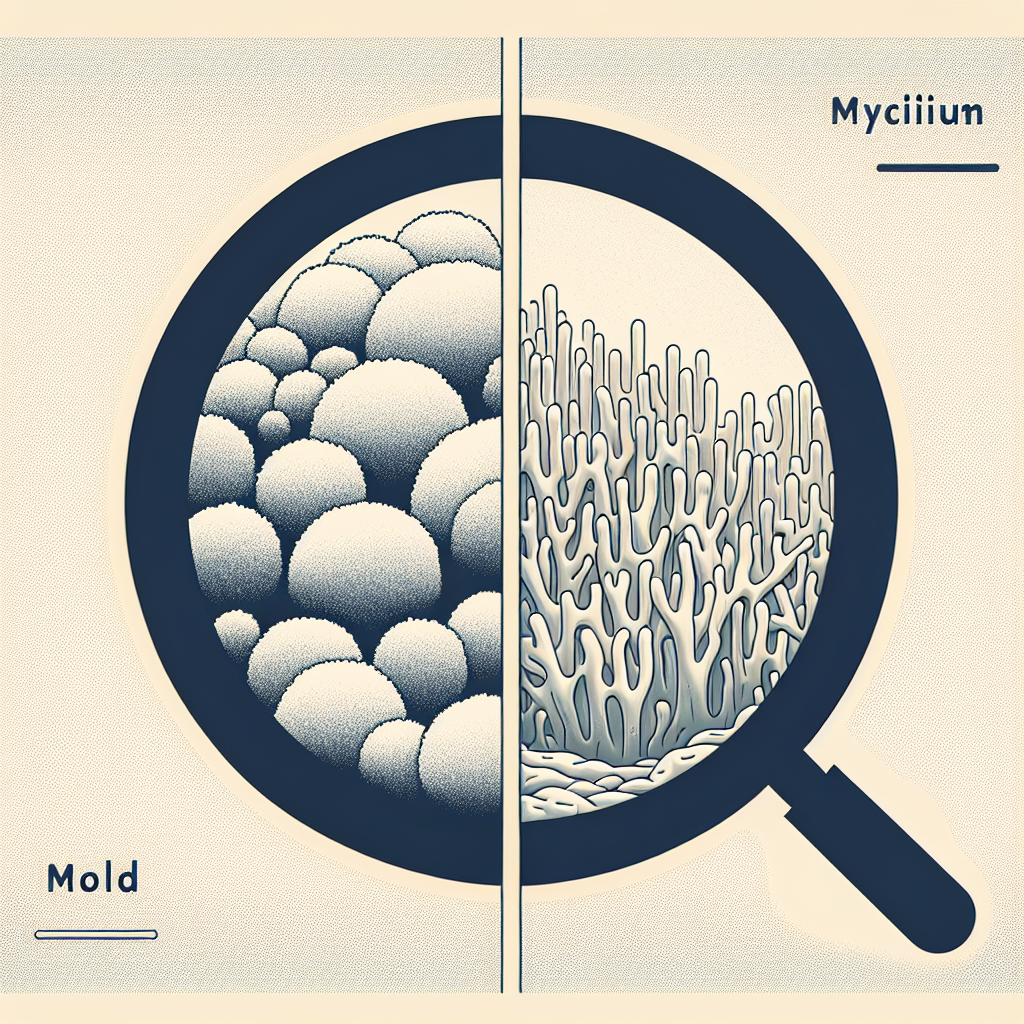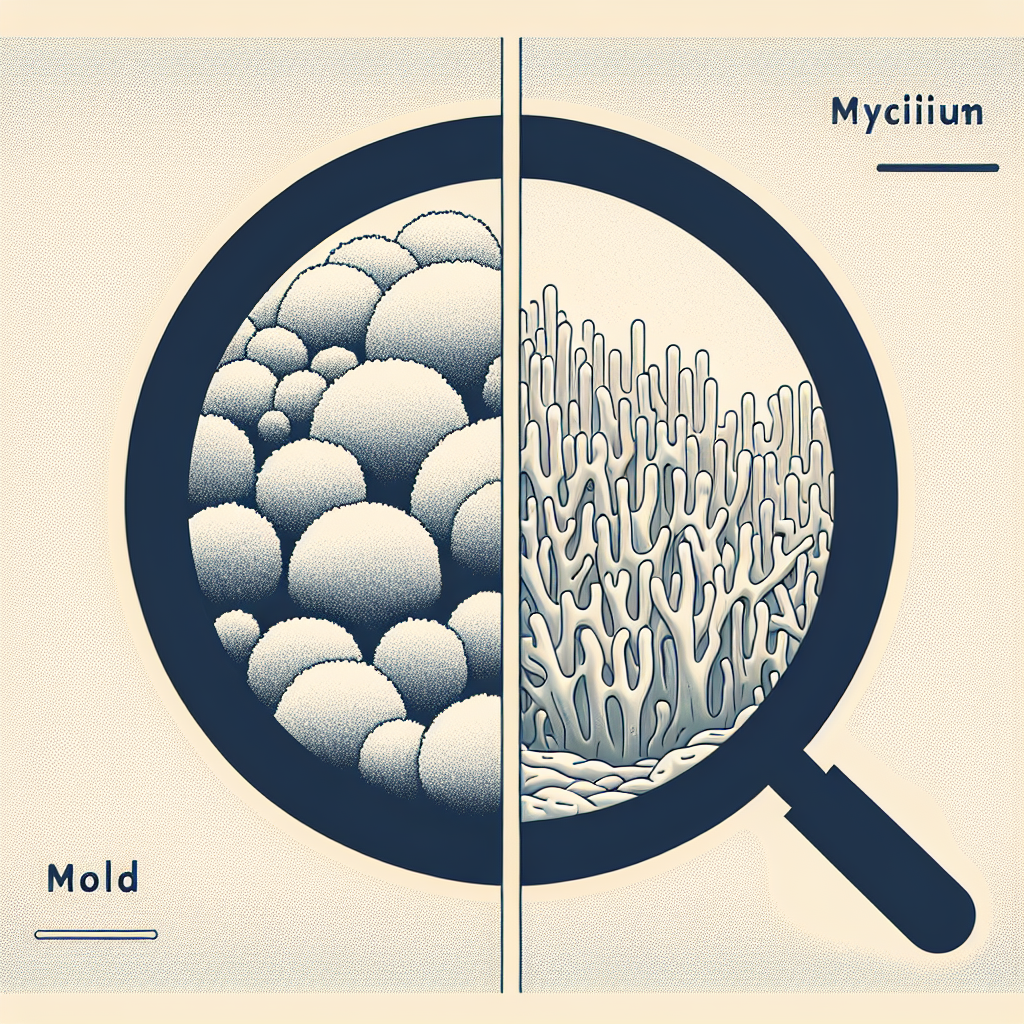As you venture further into the fascinating world of fungi, it’s crucial to untangle the confusion between mold and mycelium. Both play substantial roles in ecology and human life, yet many struggle to distinguish between them. In the forthcoming article “Understanding the Difference: Mold versus Mycelium,” you will gain a deeper comprehension of these two, their characteristics, their contributions to the environment, and the remarkable ways they manifest in our everyday existence. No longer will mold and mycelium be mere buzzwords in your vocabulary, but entities that are understood and respected for their complexities and significance in the grand scheme of life.
Understanding Fungus: The Basic Concepts
In a journey to better understand and differentiate the concepts of mold and mycelium, it is prudent to start at the root of it all and delve into the basic understanding of fungus.
Definition of Fungus
Fungus is a kingdom of eukaryotic organisms that includes microorganisms such as yeasts and molds, as well as larger, more complex organisms like mushrooms. These organisms are incapable of photosynthesis and primarily feed on organic matter, thus making them decomposers in an ecological sense. Their cell walls contain chitin, a compound also found in the exoskeletons of crustaceans and insects.
Role of Fungi in Nature
Fungi play a significant role in nature. They break down complex organic compounds into simpler ones, releasing nutrients into the environment and enabling other organisms to thrive. Fungi also form symbiotic relationships with a wide range of plants, aiding in their growth and survival. Beyond such roles, certain fungi are also directly beneficial to humans, particularly in agriculture and food production.
Common Types of Fungi
There are several common types of fungi. Yeasts, typically unicellular, are exploited for their fermentation abilities in bread and alcohol production. Molds are rapid-growing, multi-cellular fungi that reproduce through the production of airborne spores. Mushrooms, meanwhile, are the most visually familiar type of fungi, and they consist of a network of filamentous cells known as mycelium.
Definition and Characteristics of Mold
To delve into the nitty-gritty of mold, its definition and characteristics delineate it from other types of fungi.
What is Mold?
Mold is a type of fungus that grows in the form of multicellular filaments. These filaments, known as hyphae, are tubular, long, and tend to branch, forming complex networks. Such networks help the mold to absorb nutrients. Molds reproduce through the production of spores, tiny particles that become airborne, colonizing new environments when conditions are favorable.
Physical Characteristics of Mold
Mold comes in a plethora of colors, such as black, green, white, orange, and purple. The texture of mold can vary from fluffy and velvety to slimy and slick, contingent on the species and environmental conditions. Molds can also be visible to the naked eye or microscopic, often growing in colonies that might look like spots or patches.
Where Mold Is Commonly Found
Molds are ubiquitous in nature, found in both indoor and outdoor environments. They can colonize and grow on various materials, especially those providing a source of moisture and organic matter, such as food, plant materials, walls, and fabrics. Growth of mold indoors is particularly a noted health concern.
Types of Mold And Their Effects
The impact of mold varies, largely undetermined by its type.
Different Types of Mold
Among the vast variety of molds there are, some of the most prevalent include Aspergillus, Penicillium, and Stachybotrys, also known as “black mold.” Each of these molds have distinct appearances, growth patterns, and effects.
Health Effects of Mold
Most mold species are harmless, and some even beneficial to humans. Nevertheless, exposure to certain types of mold, especially over extended periods, can have health implications, particularly on respiratory health. Conditions such as allergies, asthma, and other mold-related illnesses are commonly implicated.
Mold in Buildings and Homes
Molds, if allowed to colonize and proliferate within buildings and homes, can not only cause structural damage but also lead to health issues for the inhabitants. Mold prevention and remediation are key aspects of indoor environmental health management.

Definition and Characteristics of Mycelium
Let us now shift our focus to the other component of our discussion: mycelium.
What is Mycelium?
Mycelium is the vegetative part of a fungus. It consists of a network of fine, tubular filaments, the hyphae, which grow and extend into the environment, absorbing nutrients. While often underground and unseen, mycelium comprises the main living body of the fungi.
Physical Characteristics of Mycelium
Mycelium typically appears white or colorless, with a cottony or stringy texture. However, characteristics can vary widely depending on the species. The network of hyphae can be incredibly expansive and dense.
Where Mycelium is Commonly Found
Mycelium is often found beneath the soil’s surface or any place that provides a moist and nutrient-rich environment. It is an integral part of the soil ecosystem, connected to countless organisms.
Functions of Mycelium in Nature
Mycelium plays a pivotal role in our ecosystem.
Mycelium as a Decomposer
Mycelium, much like other fungi, acts as a major decomposer in ecosystems, breaking down organic material into simpler forms that plants and other organisms can utilize.
Mycelium in Soil Fertility
Mycelium contributes to soil fertility by breaking down complex organic matter into nutrients, which are then made available to plants. Additionally, the extensive network of hyphae improves soil structure, enhancing its water and nutrient holding capacity.
Mycelium in Symbiotic Relationships
Mycelium forms symbiotic relationships with plants, specifically in a mutualism known as mycorrhiza, where the mycelium assimilates nutrients from the soil for the plant in exchange for sugars from the plant. This relationship enhances plant health and productivity.
Comparing Physical Characteristics: Mold vs Mycelium
Drawing comparisons between mold and mycelium reveals fascinating distinctions.
Color and Texture Difference
While mold can be of various bright or dull colors, mycelium is typically white or colorless. Mold can be fluffy or slimy, whereas mycelium usually exhibits a stringy or cottony texture.
Rate and Pattern of Growth
Both mold and mycelium grow by extending their hyphae. However, molds generally grow faster and are more likely to colonize and consume the available substrate rapidly. On the other hand, mycelial growth is more organized and methodical, often forming intricate, dense networks.
Visual Comparison
While mold forms visible colonies on the surface of the substrate, mycelium growth is often concealed beneath the surface. Therefore, mold is often more noticeable than mycelium.
Comparing Ecological Roles: Mold vs Mycelium
Despite various differences, both mold and mycelium serve crucial ecological roles.
Roles in Decomposition
Both mold and mycelium are key decomposers within ecosystems, breaking down complex organic compounds, thus recycling nutrients back into the environment.
Utility in Ecosystems
Whereas mold largely acts as decomposer, mycelium performs a dual role, serving also as a mutualist in mycorrhizal relationships, aiding plant health and productivity.
Effect on Other Organisms
While mold can have negative impacts on human health and built environments if unchecked, mycelium tends to have mostly beneficial effects, supporting soil health and plant growth.
Commercial and Industrial Uses of Mold and Mycelium
Besides their ecological roles, mold and mycelium carry significant commercial and industrial relevance.
Mold in Food Production
Certain molds are instrumental in food production. For example, Penicillium roqueforti and Penicillium camemberti are used in the production of Roquefort and Camembert cheese, respectively.
Mycelium in Mushroom Farming
Mushroom farming heavily relies on the growth of mycelium. When conditions are right, the mycelium will produce a fruiting body – the mushroom – that can be harvested and sold.
Innovative Uses of Mold and Mycelium
Beyond traditional uses, both mold and mycelium are being explored for innovative applications. Mycelium is being examined as a sustainable material for products like packaging, textiles, and building materials. Meanwhile, mold has been manipulated for the mass production of antibiotics like penicillin.
Health Impacts: Mold vs Mycelium
Contrary to mold, mycelium is often associated with health benefits.
Potential Health Risks of Mold
Mold exposure, particularly for prolonged periods, can pose health risks, frequently associated with allergies, asthma, and other respiratory issues.
Health Benefits of Mycelium
Mycelium of certain fungal species is marketed for its potential health benefits. For instance, mushroom-based supplements, derived from mycelium, are promoted for boosting immunity and general wellness.
Addressing Health Concerns
Avoidance of prolonged exposure to mold, regular monitoring and remediation in homes and buildings can mitigate mold health risks. Meanwhile, any health supplements, including those derived from mushrooms or mycelium, should only be taken under medical guidance.
Managing Mold and Mycelium: Control Methods
While control methods aim to prevent mold growth, they also promote the growth of mycelium.
Preventing Mold Growth in Homes
Preventing mold growth in homes involves controlling moisture, ensuring sufficient ventilation, and regular cleaning and maintenance. Proactive measures such as these can help prevent the conditions that encourage mold growth.
Promoting Mycelium Growth in Gardens
On the other hand, mycelium can be beneficial in garden settings. It can enhance soil fertility and plant health. Gardeners can promote its growth by providing a favorable environment, including organic material for the mycelium to consume.
Safe Handling and Removal of Mold
Safe mold handling involves wearing appropriate protective gear, including gloves, masks and eye protection. If airborne mold levels are high or if the mold growth is extensive, professional help should be sought for mold removal to avoid health risks.
